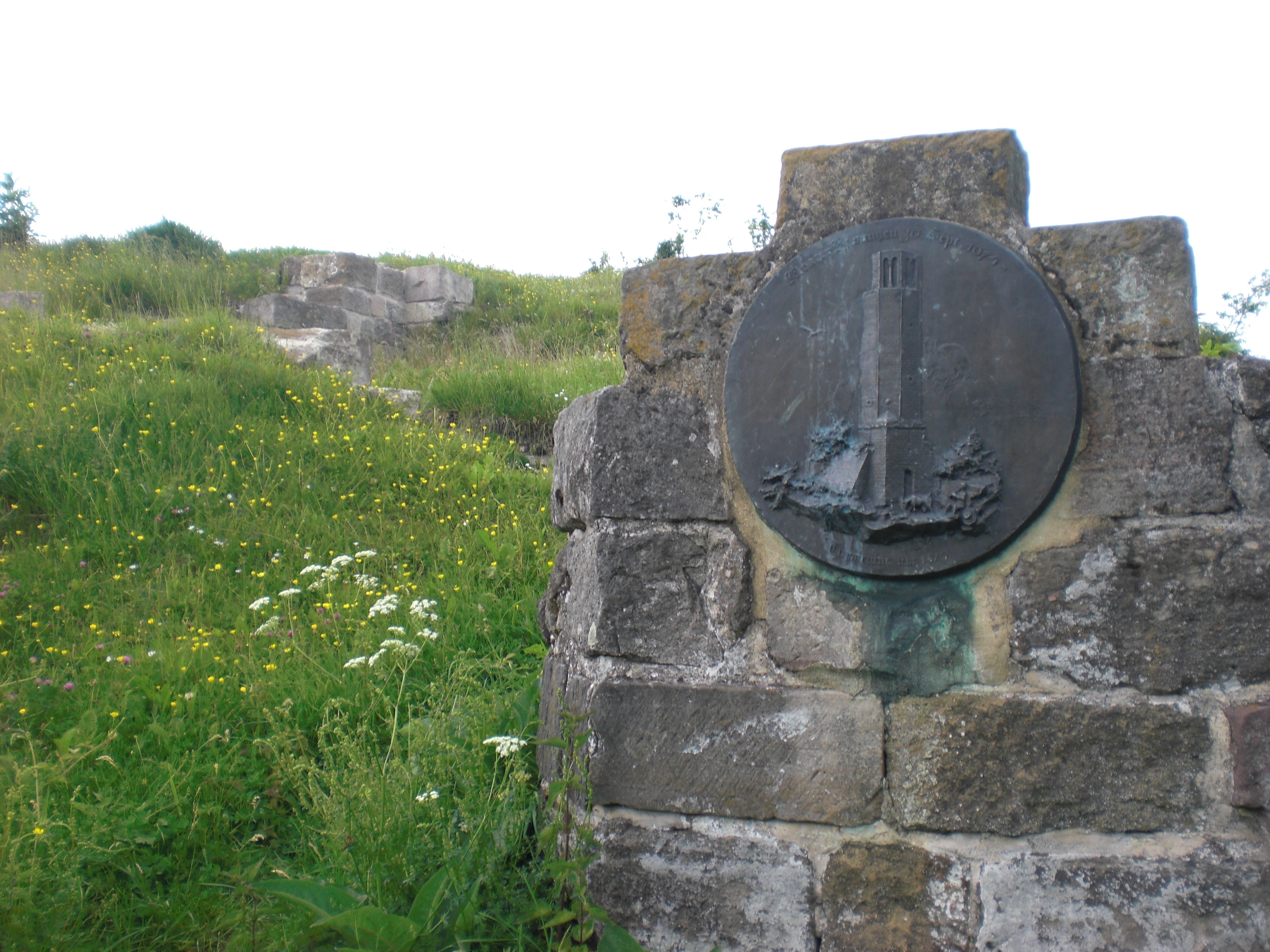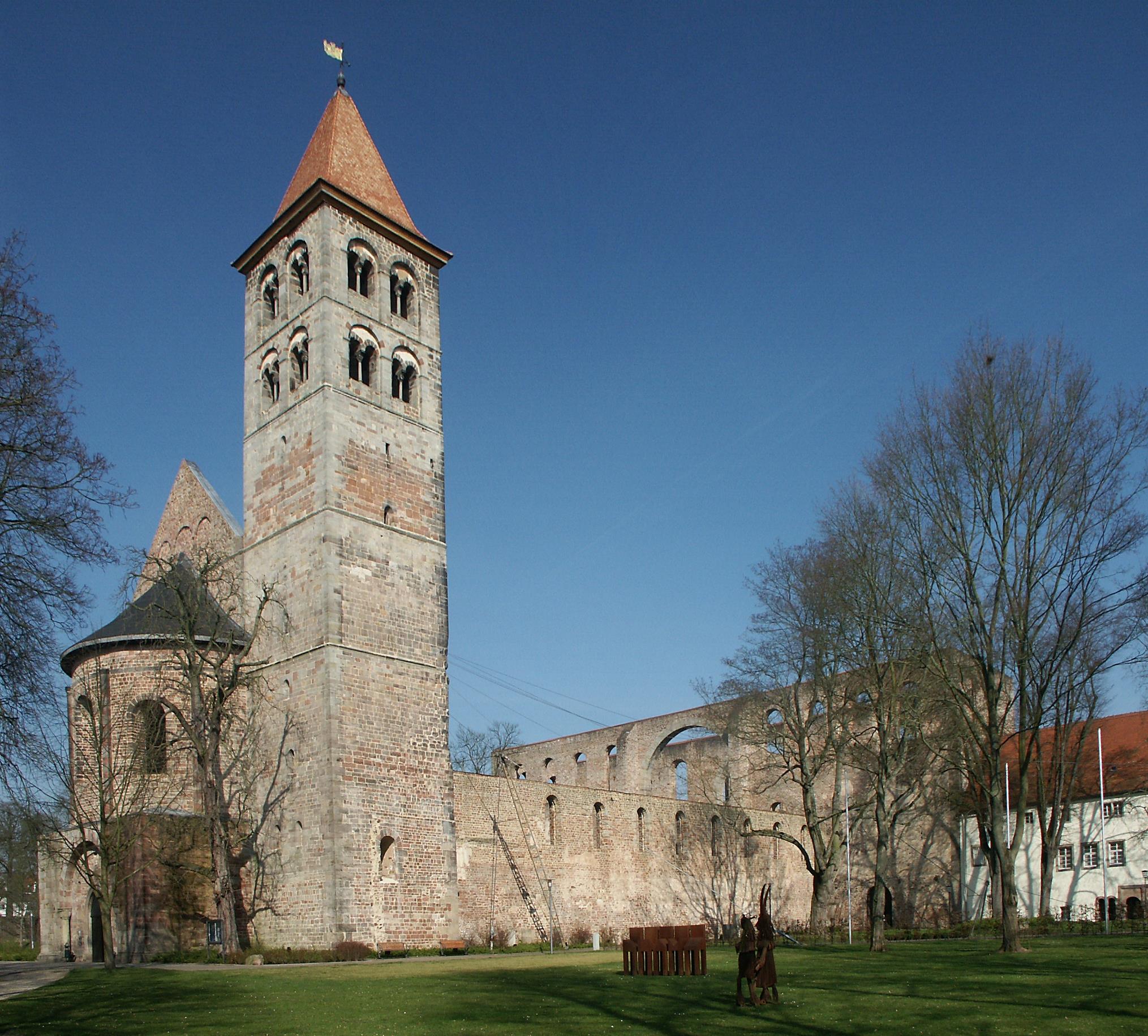|
Hasungen Abbey
Hasungen Abbey (german: Kloster Hasungen) was a monastery of the Benedictine Order located at Burghasungen, now a part of Zierenberg in Hesse in Germany. The site is at the top of a basalt mountain, the Hasunger Berg. In 1074 a monastery was built, on the authority of Siegfried I, Archbishop of Mainz, over the grave of the hermit Heimerad (d. 1019), who had a little chapel and hermitage here. The historian Lambert of Hersfeld (d. circa 1088) was possibly abbot of Hasungen towards the end of his life. The monastery existed until the Reformation, introduced in Hesse in 1527 by Philipp I of Hesse. Until then the abbey had been a centre of pilgrimage because of Heimerad, commonly venerated as a saint. After the Reformation the buildings fell into ruins, except for the tower of the abbey church, which however in 1876 a bolt of lightning struck and destroyed. Now only a few stones remain. Burials * Heimerad * Siegfried I (Archbishop of Mainz) Siegfried I (died 16 February 1 ... [...More Info...] [...Related Items...] OR: [Wikipedia] [Google] [Baidu] |
Benedictine Order
, image = Medalla San Benito.PNG , caption = Design on the obverse side of the Saint Benedict Medal , abbreviation = OSB , formation = , motto = (English: 'Pray and Work') , founder = Benedict of Nursia , founding_location = Subiaco Abbey , type = Catholic religious order , headquarters = Sant'Anselmo all'Aventino , num_members = 6,802 (3,419 priests) as of 2020 , leader_title = Abbot Primate , leader_name = Gregory Polan, OSB , main_organ = Benedictine Confederation , parent_organization = Catholic Church , website = The Benedictines, officially the Order of Saint Benedict ( la, Ordo Sancti Benedicti, abbreviated as OSB), are a monastic religious order of the Catholic Church following the Rule of Saint Benedict. They are also sometimes called the Black Monks, in reference to the colour of their religious habits. They ... [...More Info...] [...Related Items...] OR: [Wikipedia] [Google] [Baidu] |
Zierenberg
Zierenberg is a town in the district of Kassel, in Hesse, Germany. It is located 19 km east of Bad Arolsen, and 15 km northwest of Kassel on the German Timber-Frame Road. Local council The elections from 06. March 2016 showed the following results: * CDU = 8 seats * SPD = 14 seats * FDP = 2 seats * UFW = 7 seats Mayors * Conrad Brede: 1856–1880 * Karl Kupferschläger: 1880–1911 * Wiegand Pitz: 1912–1933 * Wilhelm Schäfer: 1933–1945 * Heinrich Ledderhose: 1945–1948 * Konrad Bürgel: 1948–1956 * Rudi Walther: 1957–1972 * Georg Hildebrandt: 1972–1984 * Horst Buchhaupt: 1984–1990 * Jürgen Pfütze: 1991–2008 * Stefan Denn: 2009–2020 * since 2020: Rüdiger Gemeroth Notable people *Johann Jacob Friedrich Krebs, fraktur Fraktur () is a calligraphic hand of the Latin alphabet and any of several blackletter typefaces derived from this hand. The blackletter lines are broken up; that is, their forms contain many angles when compared to ... [...More Info...] [...Related Items...] OR: [Wikipedia] [Google] [Baidu] |
Hesse
Hesse (, , ) or Hessia (, ; german: Hessen ), officially the State of Hessen (german: links=no, Land Hessen), is a States of Germany, state in Germany. Its capital city is Wiesbaden, and the largest urban area is Frankfurt. Two other major historic cities are Darmstadt and Kassel. With an area of 21,114.73 square kilometers and a population of just over six million, it ranks seventh and fifth, respectively, among the sixteen German states. Frankfurt Rhine-Main, Germany's second-largest metropolitan area (after Rhine-Ruhr), is mainly located in Hesse. As a cultural region, Hesse also includes the area known as Rhenish Hesse (Rheinhessen) in the neighbouring state of Rhineland-Palatinate. Name The German name '':wikt:Hessen#German, Hessen'', like the names of other German regions (''Schwaben'' "Swabia", ''Franken'' "Franconia", ''Bayern'' "Bavaria", ''Sachsen'' "Saxony"), derives from the dative plural form of the name of the inhabitants or German tribes, eponymous tribe, the Hes ... [...More Info...] [...Related Items...] OR: [Wikipedia] [Google] [Baidu] |
Germany
Germany,, officially the Federal Republic of Germany, is a country in Central Europe. It is the second most populous country in Europe after Russia, and the most populous member state of the European Union. Germany is situated between the Baltic and North seas to the north, and the Alps to the south; it covers an area of , with a population of almost 84 million within its 16 constituent states. Germany borders Denmark to the north, Poland and the Czech Republic to the east, Austria and Switzerland to the south, and France, Luxembourg, Belgium, and the Netherlands to the west. The nation's capital and most populous city is Berlin and its financial centre is Frankfurt; the largest urban area is the Ruhr. Various Germanic tribes have inhabited the northern parts of modern Germany since classical antiquity. A region named Germania was documented before AD 100. In 962, the Kingdom of Germany formed the bulk of the Holy Roman Empire. During the 16th ce ... [...More Info...] [...Related Items...] OR: [Wikipedia] [Google] [Baidu] |
Basalt
Basalt (; ) is an aphanite, aphanitic (fine-grained) extrusive igneous rock formed from the rapid cooling of low-viscosity lava rich in magnesium and iron (mafic lava) exposed at or very near the planetary surface, surface of a terrestrial planet, rocky planet or natural satellite, moon. More than 90% of all volcanic rock on Earth is basalt. Rapid-cooling, fine-grained basalt is chemically equivalent to slow-cooling, coarse-grained gabbro. The eruption of basalt lava is observed by geologists at about 20 volcanoes per year. Basalt is also an important rock type on other planetary bodies in the Solar System. For example, the bulk of the plains of volcanism on Venus, Venus, which cover ~80% of the surface, are basaltic; the lunar mare, lunar maria are plains of flood-basaltic lava flows; and basalt is a common rock on the surface of Mars. Molten basalt lava has a low viscosity due to its relatively low silica content (between 45% and 52%), resulting in rapidly moving lava flo ... [...More Info...] [...Related Items...] OR: [Wikipedia] [Google] [Baidu] |
Siegfried I, Archbishop Of Mainz
Siegfried I (died 16 February 1084) was the Abbot of Fulda from 25 December 1058 until 6 January 1060, and from January 1060 until his death in February 1084, he was Archbishop of Mainz. Family Siegfried was a member of the Frankish Reginbodonen family of the Rhineland. His father, also called Siegfried, was count of the Königssondergau. Count Siegfried was succeeded by his son Udalric, who was count of the Königssondergau and advocate of the diocesan church of Mainz from 1052 to 1074. Career in the church Siegfried was educated in the monastery of Fulda and became a monk there. On 25 December 1058, he was appointed abbot of Fulda and on 6 January 1060, the Empress Agnes appointed him Archbishop of Mainz. In Spring 1062, he entered the political realm as a member of the faction surrounding Anno II of Cologne, who forcibly took control of the regency of the young king, Henry IV in the Coup of Kaiserswerth. Nevertheless, Siegfried never had the political influence of Anno or Ad ... [...More Info...] [...Related Items...] OR: [Wikipedia] [Google] [Baidu] |
Heimerad
Heimerad (also known as ''Heimrad'', ''Haimrad'' or ''Heimo'') (c. 970 in Meßkirch near the Bodensee in Baden – 28 June 1019 on the Hasunger Berg (now Burghasungen) near Kassel) was a German priest and travelling preacher, popularly revered as a ''holy fool''. Life Born of unfree parents, Heimerad undertook pilgrimages in Germany, Italy and Palestine. After his return to Germany he became a monk in Hersfeld Abbey, but was expelled after a dispute about wearing the order's clothing. Nor was he accepted in the monastery at Paderborn. Because of his conspicuous and unusual way of life he was driven from several places, and became more and more desolate. At length he found a site for a hermitage on the Hasunger Berg (today Burghasungen in Zierenberg). At first mocked and scorned even there, with the passage of time he came to be revered as a saint and his advice was sought by the great: he was acquainted with the Empress Kunigunde, Bishop Meinwerk of Paderborn and Aribo, Archbisho ... [...More Info...] [...Related Items...] OR: [Wikipedia] [Google] [Baidu] |
Lambert Of Hersfeld
Lambert of Hersfeld (also called Lampert; – 1082/85) was a medieval chronicler. His work represents a major source for the history of the German kingdom of Henry IV and the incipient Investiture Controversy in the eleventh century. Life What little is known of his life is revealed in scattered details from his own historical writings. Probably a Franconian by birth, of good family, he prepared for an ecclesiastical career at the cathedral school in Bamberg, where he received tuition by Anno of Steusslingen, the later Archbishop of Cologne. On 15 March 1058 Lambert entered the Benedictine abbey of Hersfeld as a monk. On September 16, he was also ordained as a priest in Aschaffenburg and therefore sometimes called Lampert of Aschaffenburg. After his elevation to the priesthood, he made a pilgrimage to Jerusalem. Back in Hersfeld in October 1059, Lambert worked in the cloister library and taught at the monastery school. In 1071 he visited the Benedictine abbeys of Siegburg an ... [...More Info...] [...Related Items...] OR: [Wikipedia] [Google] [Baidu] |
Protestant Reformation
The Reformation (alternatively named the Protestant Reformation or the European Reformation) was a major movement within Western Christianity in 16th-century Europe that posed a religious and political challenge to the Catholic Church and in particular to papal authority, arising from what were perceived to be errors, abuses, and discrepancies by the Catholic Church. The Reformation was the start of Protestantism and the split of the Western Church into Protestantism and what is now the Roman Catholic Church. It is also considered to be one of the events that signified the end of the Middle Ages and the beginning of the early modern period in Europe.Davies ''Europe'' pp. 291–293 Prior to Martin Luther, there were many earlier reform movements. Although the Reformation is usually considered to have started with the publication of the '' Ninety-five Theses'' by Martin Luther in 1517, he was not excommunicated by Pope Leo X until January 1521. The Diet of Worms of May 1521 ... [...More Info...] [...Related Items...] OR: [Wikipedia] [Google] [Baidu] |
Philipp I Of Hesse
Philip I, Landgrave of Hesse (13 November 1504 – 31 March 1567), nicknamed (in English: "the Magnanimous"), was a German nobleman and champion of the Protestant Reformation, notable for being one of the most important of the early Protestant rulers in Germany. Biography Early life and embracing of Protestantism Philip was the son of Landgrave William II of Hesse and his second wife Anna of Mecklenburg-Schwerin. His father died when Philip was five years old, and in 1514 his mother, after a series of struggles with the Estates of Hesse, succeeded in becoming regent on his behalf. The struggles over authority continued, however. To put an end to them, Philip was declared of age in 1518, his actual assumption of power beginning the following year. The power of the Estates had been broken by his mother, but he owed her little else. His education had been very imperfect, and his moral and religious training had been neglected. Despite all this, he developed rapidly as a state ... [...More Info...] [...Related Items...] OR: [Wikipedia] [Google] [Baidu] |




.jpg)
